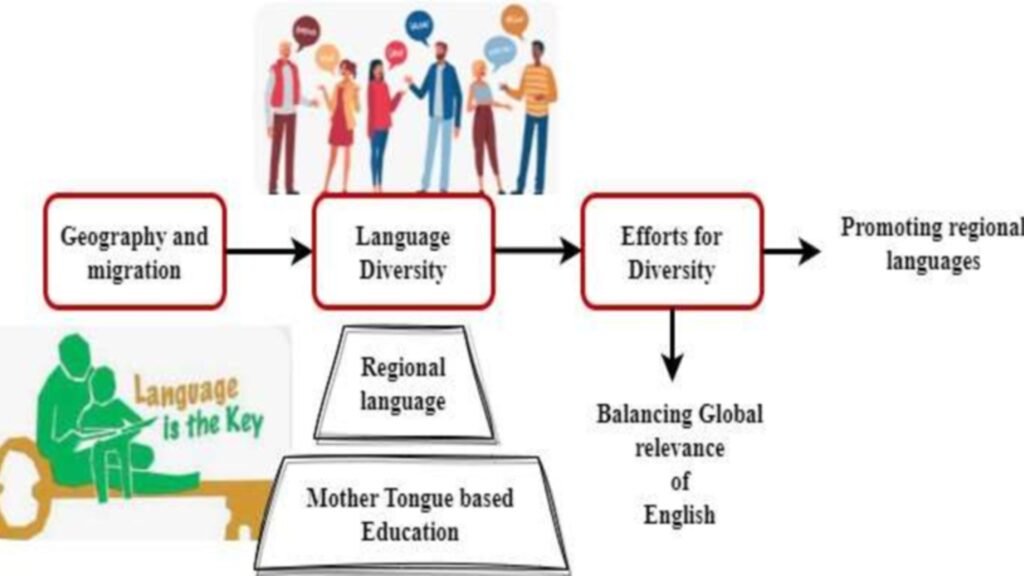India is a land of linguistic diversity, with 22 officially recognized languages and hundreds of dialects. Understanding the diversity of Indian languages can provide a deeper appreciation of the country’s rich cultural heritage. Here are some practical ways to explore the diversity of Indian languages.
1. Learn Basic Phrases in Different Languages
One of the simplest ways to appreciate the diversity of Indian languages is to learn basic phrases in several of them. Greetings, common expressions, and simple questions can give you a taste of how different languages sound and feel. For example, learning “Namaste” in Hindi, “Vanakkam” in Tamil, and “Sat Sri Akal” in Punjabi can help you connect with speakers of these languages.

2. Watch Regional Movies
India’s film industry is not limited to Bollywood. There are thriving film industries in various states, each producing movies in their regional languages. Watching films in languages like Telugu, Bengali, Marathi, and Malayalam can give you a glimpse into the local culture and linguistic nuances. Subtitles can help you follow the story while getting used to the sound of the language.
3. Listen to Regional Music
Indian music is as diverse as its languages. Listening to regional music is a great way to explore the diversity of Indian languages. From classical Carnatic and Hindustani music to folk songs and contemporary hits, each language has its musical traditions. Platforms like YouTube and music streaming services have extensive collections of regional music that you can enjoy.
4. Read Regional Literature
Exploring the diversity of Indian languages through literature can be deeply enriching. Many Indian authors write in their native languages, producing a wealth of novels, poems, and short stories. Reading translated works or learning to read simple texts in their original language can give you insight into the literary richness of different regions.
5. Travel to Different States
Travelling within India offers a unique opportunity to experience the diversity of Indian languages firsthand. Visiting different states and interacting with locals can help you understand the practical usage and cultural context of various languages. Whether it’s shopping in a local market, ordering food in a restaurant, or chatting with a cab driver, each interaction can enhance your linguistic experience.
6. Take Language Classes
If you are particularly interested in a specific language, taking a formal class can be very beneficial. Many universities and language institutes offer courses in various Indian languages. Structured learning can help you gain a deeper understanding of grammar, vocabulary, and pronunciation. Plus, you’ll get to practice speaking with instructors and fellow students.
7. Join Language Exchange Programs
Language exchange programs provide a platform to learn and practice languages with native speakers. You can join online language exchange communities or find local groups. Engaging in conversations with native speakers can improve your language skills and give you a more authentic understanding of the language.
8. Use Language Learning Apps
Language learning apps like Duolingo, Babbel, and Memrise offer courses in several Indian languages. These apps make learning fun and interactive with games, quizzes, and daily challenges. They are a great way to start learning a new language or to supplement your ongoing studies.
9. Explore Language-Specific Festivals
India hosts numerous cultural and language-specific festivals throughout the year. Attending these festivals can immerse you in the local language and culture. Festivals like the Tamil Pongal, Bengali Durga Puja, and Marathi Ganesh Chaturthi offer rich linguistic and cultural experiences.
10. Engage with Regional Media
Consuming regional media is another effective way to explore the diversity of Indian languages. Reading newspapers, watching news channels, and following social media accounts in different languages can keep you updated with current events and improve your language skills.
11. Participate in Cultural Workshops
Cultural workshops often include language learning as part of the program. Workshops on traditional dance, music, or crafts frequently incorporate regional languages, providing a holistic cultural experience. Participating in these workshops can be both educational and enjoyable.
12. Practice with Language Partners
Finding a language partner can significantly enhance your learning experience. Practice speaking, reading, and writing with someone fluent in the language you are learning. Language partners can offer corrections, feedback, and encouragement, making your learning journey more effective.
13. Use Flashcards for Vocabulary
Flashcards are a great tool for building vocabulary in different Indian languages. Create flashcards with new words and phrases and review them regularly. Apps like Anki or Quizlet can help you organize and practice your vocabulary efficiently.
14. Follow Regional Language Channels on YouTube
YouTube has a vast array of channels dedicated to teaching Indian languages. From basic tutorials to advanced lessons, you can find content tailored to your level. Following these channels can provide additional practice and insights into the language.
15. Be Consistent and Patient
Learning multiple languages requires consistency and patience. Set aside regular time for study and practice, and be patient with your progress. Celebrate small achievements and keep yourself motivated by remembering the cultural richness and connections you are gaining.
Conclusion
Exploring the diversity of Indian languages is a fascinating and rewarding endeavour. By using these tips, you can immerse yourself in the linguistic richness of India and gain a deeper appreciation of its cultural heritage. Whether you’re learning basic phrases or becoming fluent in a new language, each step brings you closer to understanding the beautiful diversity of Indian languages.

